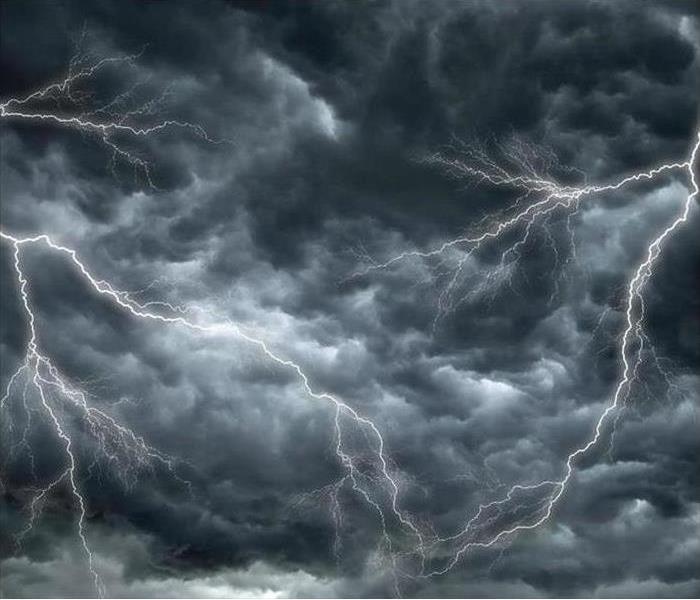Do You Have a Storm Safety Plan? | SERVPRO of Gillette, Sheridan
5/19/2022 (Permalink)
 If you discover storm damage to your home or business, reach out to SERVPRO of Gillette, Sheridan right away.
If you discover storm damage to your home or business, reach out to SERVPRO of Gillette, Sheridan right away.
Severe weather can be very frightening. When weather brings lightning, heavy rain, damaging winds and hail, it can be dangerous to your home and to your personal well-being. Plus, considering that there are around 100,000 thunderstorms throughout the United States every year, storms are common.
The unique topography of the Black Hills can spin off tornadoes and help kickstart severe weather when the cool air is disrupted. In fact, the Gillette, Sheridan area is known for some unusual weather patterns. When the weather can change quickly like this, it is more important than ever to be sky-aware.
While we know that we cannot control the weather, we can be prepared for it! Having an emergency kit, a communications strategy and a plan for dealing with the aftermath of the storm are all types of things you can do to be prepared for the impact on your home and your life.
Your Severe Weather Communication Strategy
Having a way to communicate with your family is incredibly important during severe weather, and you should always have a way to receive communications from the news or city authorities. It is also important to know the difference between watches and warnings so you can know whether to simply be aware of your surroundings or take shelter immediately.
Secondly, you should have have multiple ways to receive alerts from officials, like your cellphone and an NOAA weather radio.
Lastly, make sure you have a communication strategy for your household. Locate a specific location in your home that will be your safe area (like a basement or a fully enclosed room) that everyone knows is the place to go to when the weather becomes severe. Additionally, make sure you have a plan in place to communicate with family members who are away from your home during and after the storm so you can reconnect quickly when it is over.
What Should Be in Your Emergency Kit?
Plan to pack the essentials that your family will need to sustain them for at least 72 hours of sheltering, and it should be packed and ready to use in your designated safe shelter area of your home. You should have nonperishable food, water, first-aid supplies and a flashlight with extra batteries.
You should also have anything else your family needs to be safe and comfortable, like daily medication or something that is necessary but would not always be easily accessible.
Your Severe Weather Aftermath Checklist
After the severe weather has passed, it is a good idea to review your safety plan and make any necessary changes, as well as assess any damage done to your home. Once it is safe to do so, check your property for damage.
Take a look around at your roof and the seals around your windows and doors, as these areas are the most likely to suffer water damage.
If you do discover damage, calling us at SERVPRO of Gillette, Sheridan is the necessary first step. We are the trusted team of professionals who will be sure to provide you with a quick response and a reliable timeline to begin the restoration process in your home.
When your household is all together again after the storm has passed, do an audit of your safety plan. Discuss what worked and what needs to be adjusted, repack your emergency kit and edit anything that wasn’t beneficial to your process. Those adjustments will make sure you are better prepared for the next time you encounter severe weather.
If you discover storm damage to your home or business, you can count on SERVPRO to handle the restoration. We’re here 24⁄7 to spring into action—get in touch with us today.





 24/7 Emergency Service
24/7 Emergency Service